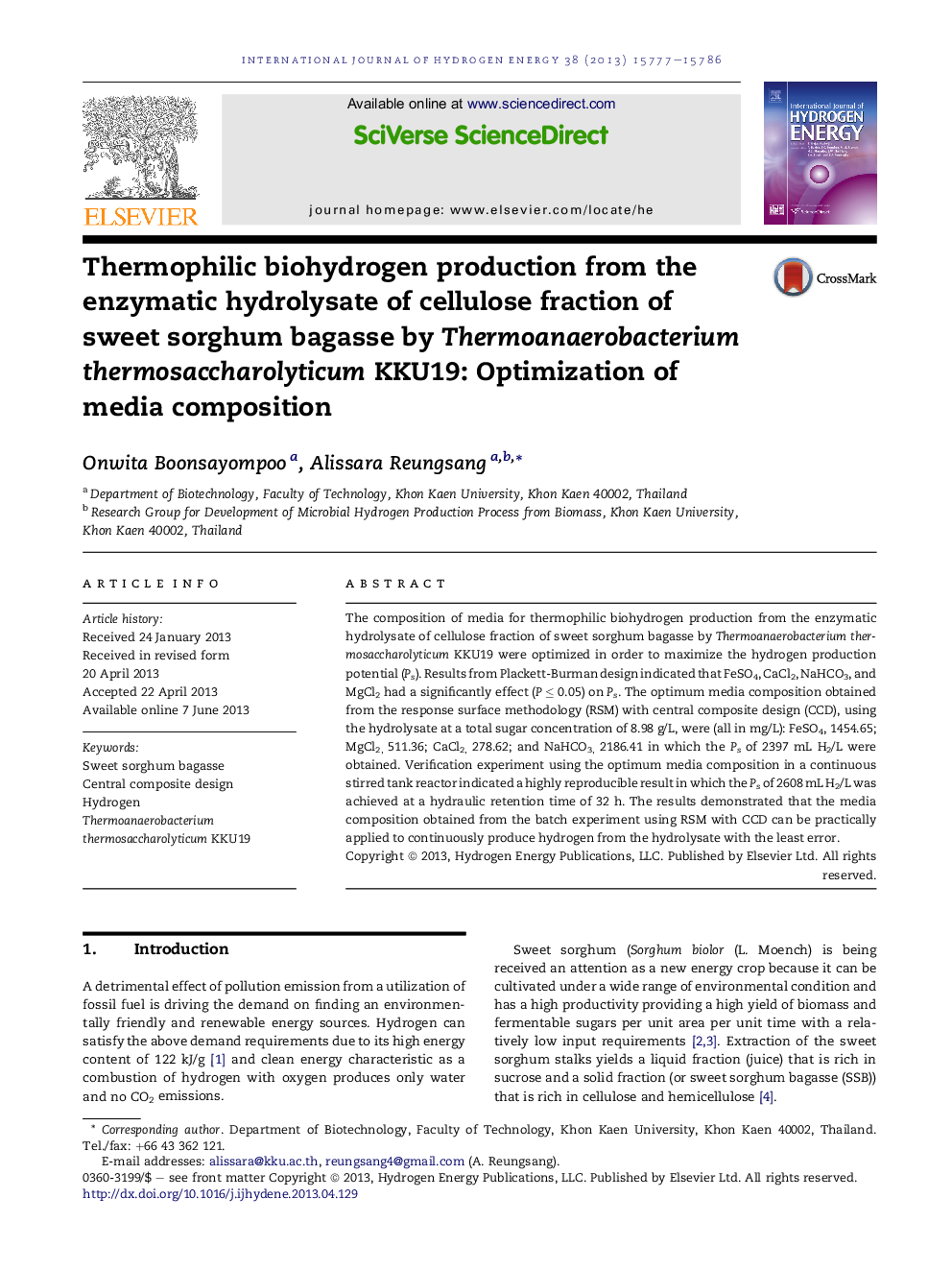| Article ID | Journal | Published Year | Pages | File Type |
|---|---|---|---|---|
| 7721734 | International Journal of Hydrogen Energy | 2013 | 10 Pages |
Abstract
The composition of media for thermophilic biohydrogen production from the enzymatic hydrolysate of cellulose fraction of sweet sorghum bagasse by Thermoanaerobacterium thermosaccharolyticum KKU19 were optimized in order to maximize the hydrogen production potential (Ps). Results from Plackett-Burman design indicated that FeSO4, CaCl2, NaHCO3, and MgCl2 had a significantly effect (P â¤Â 0.05) on Ps. The optimum media composition obtained from the response surface methodology (RSM) with central composite design (CCD), using the hydrolysate at a total sugar concentration of 8.98 g/L, were (all in mg/L): FeSO4, 1454.65; MgCl2, 511.36; CaCl2, 278.62; and NaHCO3, 2186.41 in which the Ps of 2397 mL H2/L were obtained. Verification experiment using the optimum media composition in a continuous stirred tank reactor indicated a highly reproducible result in which the Ps of 2608 mL H2/L was achieved at a hydraulic retention time of 32 h. The results demonstrated that the media composition obtained from the batch experiment using RSM with CCD can be practically applied to continuously produce hydrogen from the hydrolysate with the least error.
Related Topics
Physical Sciences and Engineering
Chemistry
Electrochemistry
Authors
Onwita Boonsayompoo, Alissara Reungsang,
